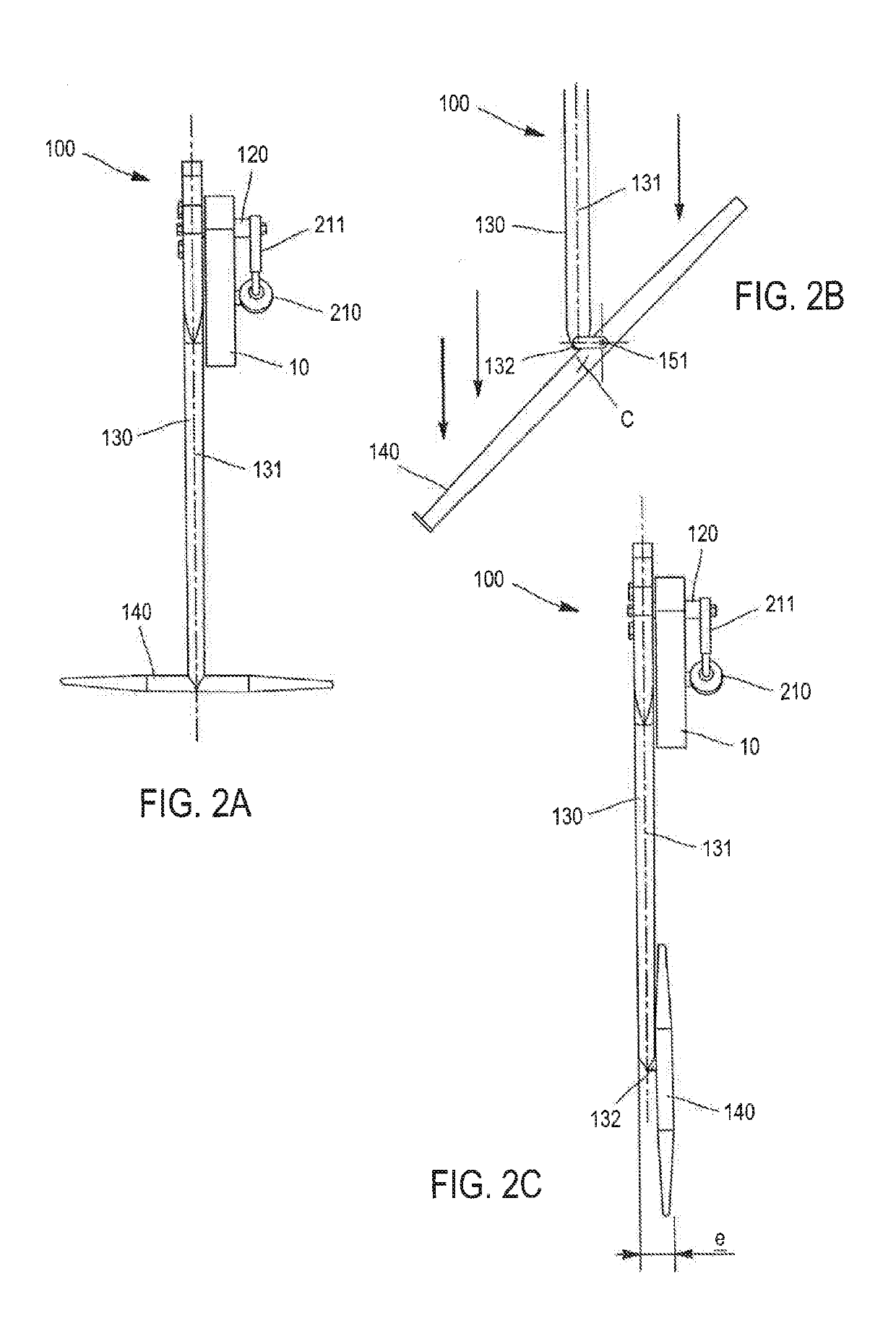Retractable wing
a load-bearing wing and wing body technology, which is applied in the direction of waterborne vessels, hulls, vessel construction, etc., can solve the problems of complex and hazardous mooring alongside quays or pontoons, the configuration of such load-bearing wings is not naturally stable as regards ride height, etc., and achieves simple design and easy and quick retraction
- Summary
- Abstract
- Description
- Claims
- Application Information
AI Technical Summary
Benefits of technology
Problems solved by technology
Method used
Image
Examples
Embodiment Construction
[0044]In the remainder of the description the terms “bow” and “stern” are defined in relation to the hull of a boat and according to its direction of motion. Likewise the terms “upper” or “top” or “above” and “lower” or “bottom” or “below” are defined with respect to the hull and the surface of the water.
[0045]The leading edge of a load-bearing plane is defined as being the edge which first touches the fluid.
[0046]The trailing edge of a load-bearing plane, opposite the leading edge, is the edge to which the fluid flows.
[0047]The angle of incidence, also known as the angle of attack, is the angle that forms the cord or axis of the load-bearing plane with the direction of fluid flow. By “cord” or “axis of the load-bearing plane” is meant the straight line joining the leading edge to the trailing edge. Lift increases with the angle of incidence up to a maximum valise where detachment and loss of lift occurs. In order to have a positive incidence, and therefore positive lift, the leadin...
PUM
 Login to View More
Login to View More Abstract
Description
Claims
Application Information
 Login to View More
Login to View More - R&D
- Intellectual Property
- Life Sciences
- Materials
- Tech Scout
- Unparalleled Data Quality
- Higher Quality Content
- 60% Fewer Hallucinations
Browse by: Latest US Patents, China's latest patents, Technical Efficacy Thesaurus, Application Domain, Technology Topic, Popular Technical Reports.
© 2025 PatSnap. All rights reserved.Legal|Privacy policy|Modern Slavery Act Transparency Statement|Sitemap|About US| Contact US: help@patsnap.com



